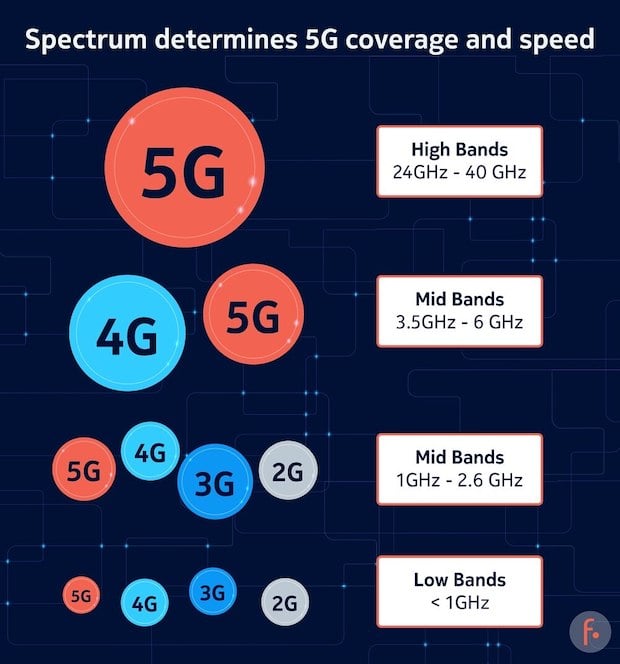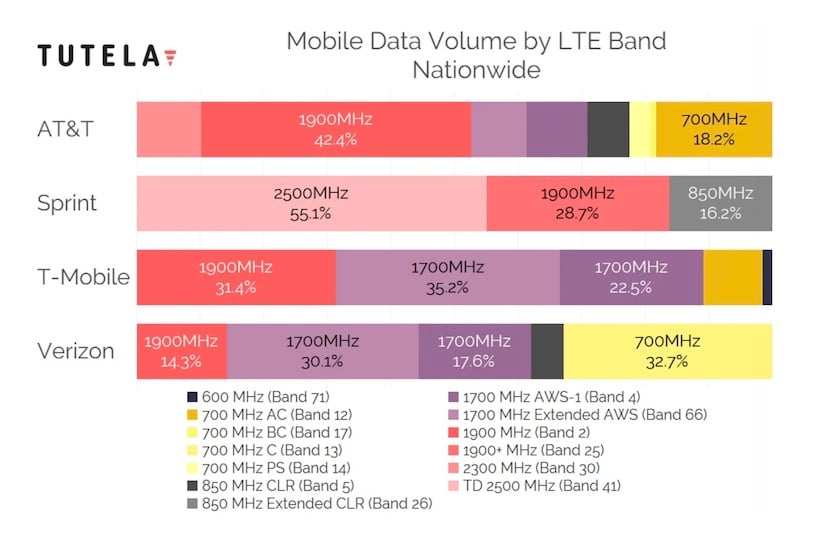
(Headline article below) I’ve taken to putting my phone into airplane mode (turning off the radios) if I have it on me. And when home I turn off cellular data as it’s on WiFi with WiFi calling, and turn off WiFi when away from the house. I also have an older phone though 5G, it has the standard 4G frequency bands and none of the really high frequency bands. Another problem with 5G is the pulse modulation and at high frequencies your sweat gland ducts act as antennas absorbing the radiation and even returning circularly polarized radiation that is reflected. There is a presentation by a physicist on how this all works. And looking at Wikipedia, they have frequency bands assigned up to 71 GHz, with 24 GHz to 71 GHz being mmWave.

By Suzanne Burdick, Ph.D.
A healthy woman’s blood cells formed abnormal clumps after just five minutes of having an idle cellphone placed on her leg. The same thing happened when researchers held the cellphone an inch away from the woman’s body, according to a peer-reviewed study published April 23 in Environment: Science and Policy for Sustainable Development.
Using ultrasound, the researchers showed that the woman’s blood cells developed a rouleaux formation, an abnormal red blood cell pattern in which the cells stack together in long rows like piles of coins, according to MyHematology.com.
Dr. Robert Brown, the study’s author, said that although the impact of rouleaux formation on health is not well understood, it’s “not without potential health consequences.”
Brown is a diagnostic radiologist with more than 30 years of experience and the vice president of Scientific Research and Clinical Affairs for the Environmental Health Trust (EHT). He said:
“Because of the impact on gas exchange and increased blood viscosity due to clumping, it is possible rouleaux could account for the unusual uptick in once-uncommon disease processes and disorders increasing in our society over the past few decades, including hypertension, obesity, diabetes, strokes, particularly in the younger population, and others.”
According to Brown, the study is key to educating the medical community on how wireless radiation affects a person’s biological functioning.
“If we want to see a change in government regulations and a decrease in the indiscriminate usage of wireless technology, the allopathic medical community needs to become knowledgeable of the health effects of wireless communication radiation,” Brown said. “I believe this study has cracked the proverbial egg.”
Devra Davis, Ph.D., MPH, a toxicologist and epidemiologist who is founder and president emerita of the EHT, said, “This finding of clumping in the blood after only five minutes of direct cellphone exposure should give pause to all who keep phones close to their bodies.”
The EHT is a nonprofit research and education group focused on the effects of wireless radiation.
Researchers repeated the experiment several times
For the data in this study, Brown and his colleague, Barbara Biebrich, an ultrasound technician, did an initial experiment including an ultrasound scan of the leg vein of a 62-year-old asymptomatic woman with no history of allergy, blood disorder or systemic disease.
Next, they placed an idle Apple iPhone XR cellphone on the back of her knee for five minutes. The phone was connected to AT&T’s mobile network with its Wi-Fi, Bluetooth and cellular antennas turned on. However, the phone didn’t make calls or send texts, or receive calls or texts, while placed on the back of her knee.
After five minutes, the researchers did another ultrasound. The second ultrasound showed that cellphone radiation caused the blood cells in the woman’s popliteal vein, located behind the knee, to clump in rouleaux formation.
Brown and Biebrich repeated their experiment with the same woman multiple times over three months. “Each time, we encountered the same results,” Brown wrote.
On one occasion, the woman’s blood cells were already in rouleaux formation before having the cellphone placed on her knee for five minutes.
“Although we were initially perplexed,” Brown wrote, “I asked the participant where she had kept her cellphone just before the scan, and she replied that it had been in her pocket.”
Supplements, T-Shirts, and… DAGGERS! Shop at The Alex Jones Store and get essential gear, stick it to the globalists, and keep independent journalism alive in America.
The researchers also altered the experiment by placing the cellphone an inch away from the woman’s skin, rather than placing it directly on her body. Again, they waited five minutes.
“She went into rouleaux, even with the cellphone exposure an inch away,” Brown wrote.
“By demonstrating rouleaux in a deep leg vein, the study confirms that the penetration and associated physiological effects of wireless radiation are not limited to the first few millimeters of skin, but do, in fact, occur deeper in the body,” Brown said.
This finding has “significant implications for safety,” he said.
The Federal Communications Commission’s safety exposure limits for wireless radiation are based on the assumption that the radiation can harm human health only at levels high enough to heat human tissue. Cellphones emit radiation at levels lower than that.
Many scientists, including Brown, say there’s evidence that non-thermal levels of wireless radiation may negatively affect human biology.
The study provides a “visible manifestation” that cellphone radiation at non-thermal levels has biological effects.
The study didn’t clarify what specific range of cellphone radiation frequencies, such as 4G or 5G, caused the blood to clump.
The cellphone was idle and not actively engaging a 4G or 5G network, beyond the usual “handshaking” communication that cellphones do with cell towers, Brown said.
‘I am quite certain our subject is not a unicorn’
In the experiment report, the researchers said they are planning a larger study to assess how prevalent cellphone radiation-induced rouleaux formation may be among the general population.
“Although the incidence of rouleaux formation following cellphone exposure is unknown, I am quite certain our subject is not a unicorn,” Brown said.
Ultrasound imaging is relatively inexpensive and popular, so it should be easy for other researchers to do follow-up studies, too, he added.
The researchers first published some of their results from using ultrasound to show that cellphone radiation induces abnormal blood clumping in a Feb. 10 peer-reviewed article in Frontiers in Cardiovascular Medicine.
The April study in the Environment journal restates much of the February report in Frontiers. However, the report in Frontiers did not include the results from holding the cellphone an inch away from the woman’s body because the researchers had not yet done that experiment.
Both reports are important because they target different audiences, according to Brown.
The Frontiers journal is a resource for the physician community, particularly cardiologists and cardiovascular surgeons, Brown explained. The Environment journal is geared for the “much broader environmental science community,” he said.